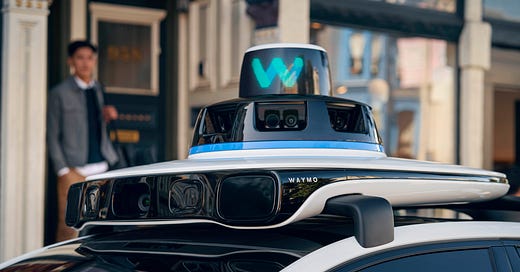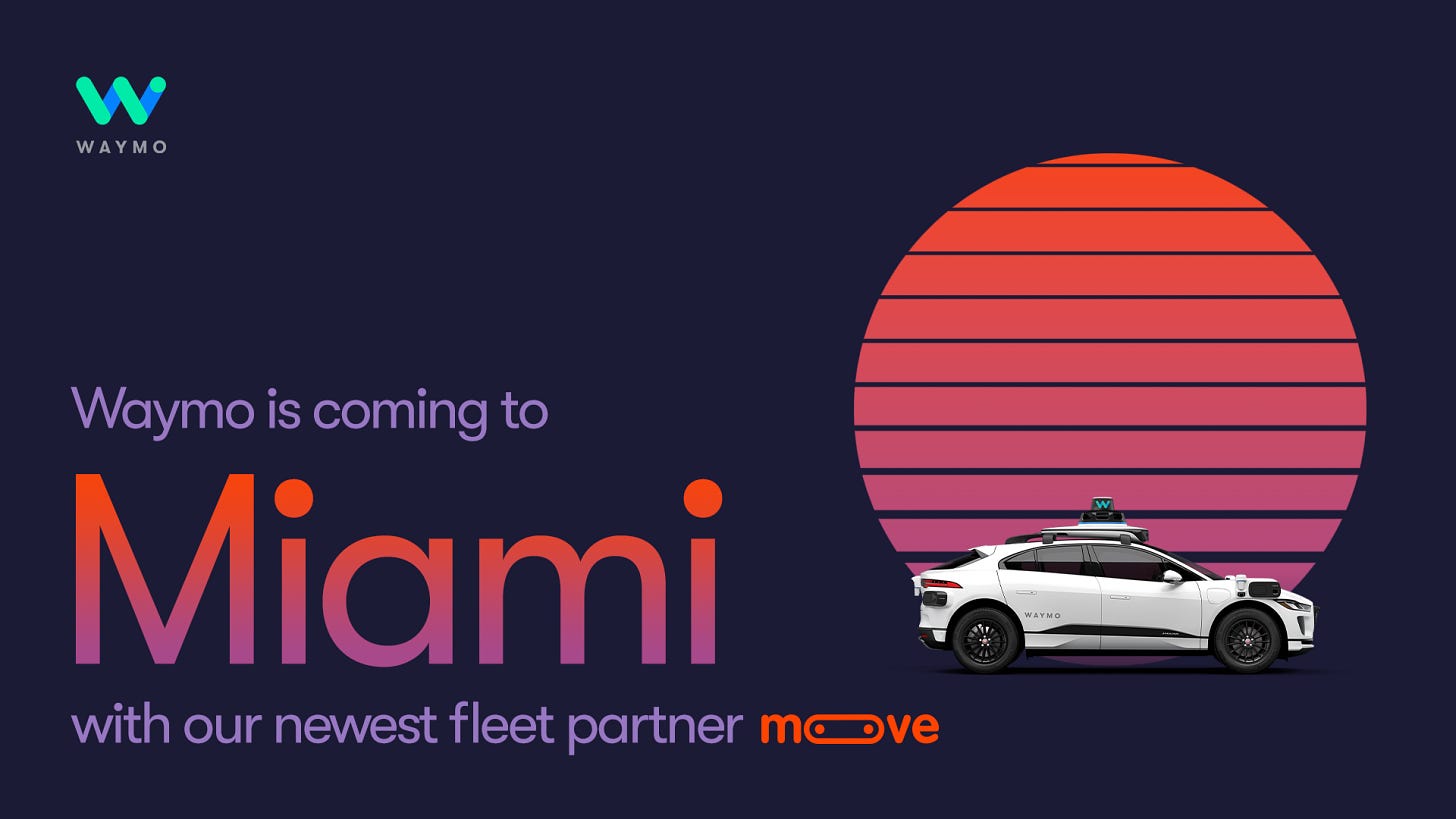💥Waymo's surprising Miami expansion led to Uber's stock slide by 10%💥
Should you invest in Uber now? 🤯
Recently Waymo announced the news to expand to Miami in early 2026. This will be the 6th city that Waymo operates in, after San Francisco, Phoenix, Los Angeles, Austin and planned expansion in Atlanta (beginning in early 2025).
When Waymo made this announcement on Dec 5th, Uber’s share immediately fell 10%‼️
Is this price move an overreaction? I will walk through my answer and thought process at the end of this article!
Before that, let’s dig into some of the key discussion points:
What’s NEW about this announcement?
How is Waymo different from Tesla, and why does that matter?
Waymo’s operating structure
Most importantly, should you be worried as an Uber’s shareholder?
Subscribe below⬇️to get the latest in-depth analysis on tech companies. ✅
✅ First thing first, what’s the BIG DEAL here?
The announcement itself that Waymo is expanding in Miami shouldn’t really be a surprise as Waymo has been testing its Autonomous Vehicles (AVs) in Florida since 2019.
However, what is surprising is the operating structure and partnership announcement 🫨.
This time, Waymo users are able to order a ride through the Waymo One App, so it’s a DTC (direct-to-customer) approach. However, just in September, Waymo and Uber announced a partnership to launch in Atlanta and Austin, where users will ONLY be able to get a Waymo ride on the Uber app.😕
As for fleet management, Waymo is partnering with Moove this time, rather than have Uber manage the fleet in the cases of Atlanta and Austin (more on Waymo’s operating structure later in this article).
Who is Moove?
Moove is a vehicle financing company based in Africa that provide affordable auto financing for workers (they charge a below-market interest and instead collect payment from workers’ earnings).
What will Moove provide? In this partnership, Moove will manage Waymo’s fleet operations, facilities and charging infrastructure. Why do you need that? For example, if a drunk passenger threw up in the back of the car, someone got to clean the car to ensure that the next passenger can still take a ride with comfortable and consistent experience.
✅ How is Waymo different from Tesla?
A brief history of Waymo
Waymo started as part of Google’s self driving project back in 2009 and launched its first ride hailing service in Chandler (part of the Greater Phoenix metropolitan area) in 2017. Then in 2020, they removed the drivers and became the first company to launch fully self-driving rideshare service in the world.
Since then, they have expanded service into San Francisco, Los Angeles, Austin and Atlanta. In terms of number of rides, Waymo has done millions of rides and completes approximately 150,000 rides per week.
Difference vs Tesla
1. Vehicle Autonomy Level
The first difference is the autonomy level between a Tesla and a Waymo. Tesla autopilot is classified as Level 2 while Waymo is a Level 4 or Level 5. The biggest difference between Level 2 and higher level is who is monitoring the driving environment. Is it the human or the automated system?
Level 5 is full automation, in which case the vehicle performs all the driving tasks under ALL condition. No human attention is required. As a passenger on a Waymo, you do not need to have a driver’s license because you are not expected to monitor or intervene the driving process.
When I got my first Waymo ride in Phoenix during a business trip, I found it super easy to use. Waymo One is just like an Uber app. I didn’t need a driver’s license to register. The entire process was very smooth. It’s a magical experience - I just sat there, changed music and relaxed. But passengers are not allowed to touch steering wheel or any equipment related to the movement of the car.
There was nobody sitting on the driver seat, although you can see the movement of the steering wheel as the car moves!
2. Technology Difference - LiDAR vs Camera
Currently Waymo uses Jaguar’s I-PACEs for its vehicles. One big difference between a Tesla and a Waymo is the sensing device. Tesla uses cameras whereas Waymo uses a combination of LiDAR, radar and cameras.
LiDAR stands for Light Detection and Ranging. It is an active sensor and determines range by targeting an object with laser and measure the time for the reflected light to return to the receiver. Because it can send millions of laser points per second, LiDAR can outline its surroundings in great detail with high resolution.
LiDAR directly obtain the size and distance of its surrounding objects, whereas cameras have to rely on algorithmic estimates. Camera is a passive sensor and its accuracy can be affected by light or shadow.
Keep reading with a 7-day free trial
Subscribe to Analyst Journal to keep reading this post and get 7 days of free access to the full post archives.






